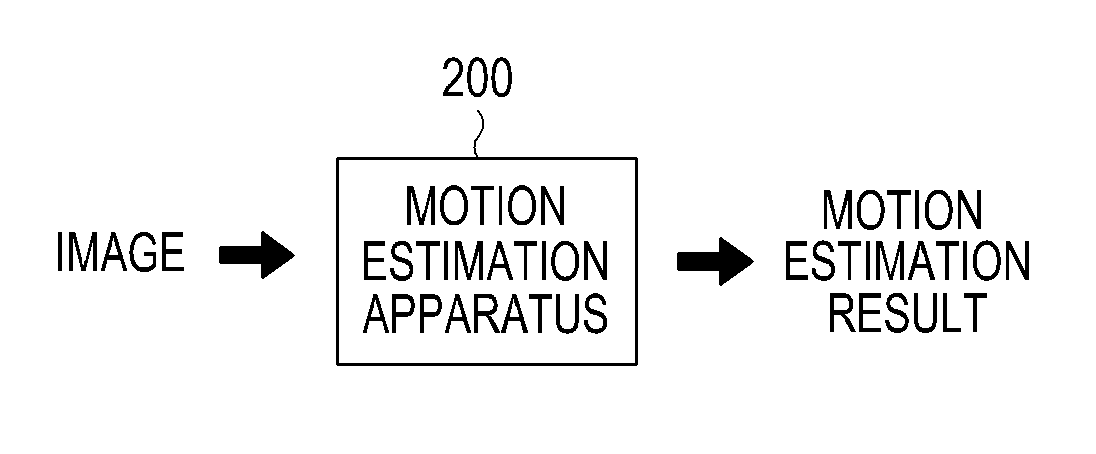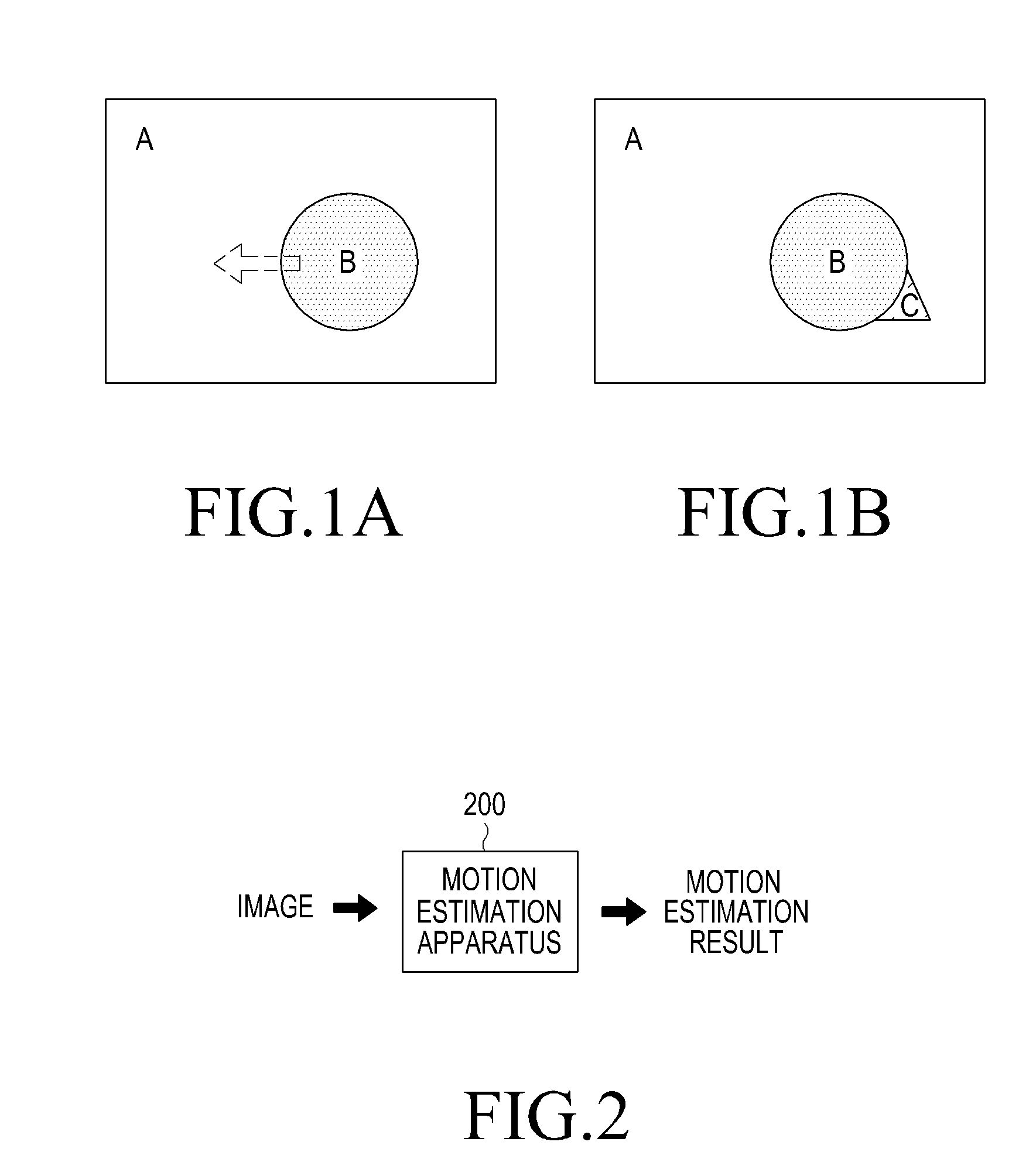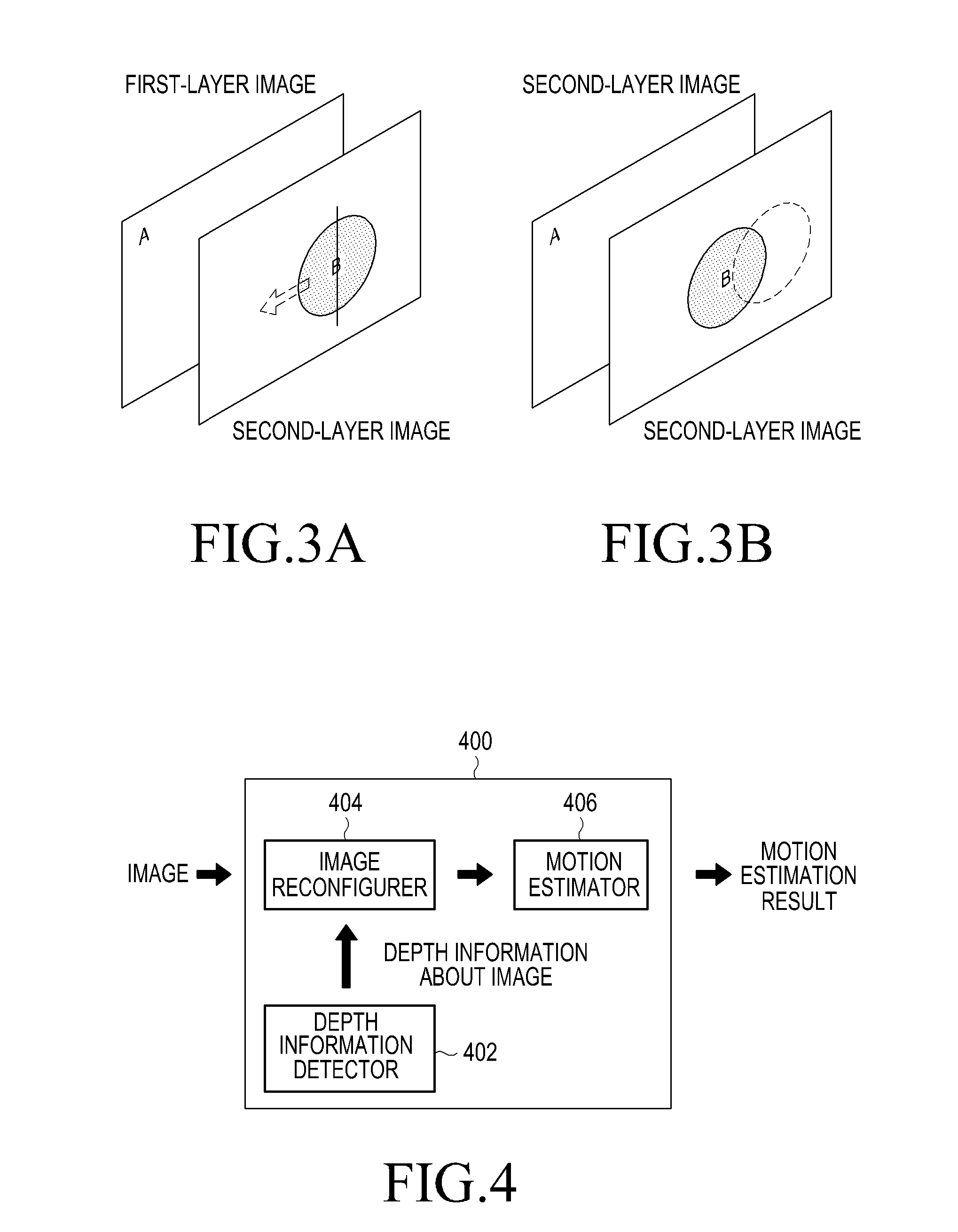Apparatus and method for motion estimation in an image processing system
- Summary
- Abstract
- Description
- Claims
- Application Information
AI Technical Summary
Benefits of technology
Problems solved by technology
Method used
Image
Examples
Embodiment Construction
[0023]Reference will be made to preferred exemplary embodiments of the inventive concept with reference to the attached drawings. A detailed description of a generally known function and structure of the inventive concept will be avoided lest it should obscure the subject matter of the inventive concept. In addition, although the terms used in the inventive concept are selected from generally known and used terms, the terms may be changed according to the intention of a user or an operator, or customs. Therefore, the inventive concept must be understood, not simply by the actual terms used but by the meanings of each term lying within.
[0024]The inventive concept provides an apparatus and method for performing motion estimation in an image processing system. Specifically, depth information is detected from a received image on the basis of a predetermined unit. Objects included in the received image are separated based on the detected depth information. An image which corresponds to e...
PUM
 Login to View More
Login to View More Abstract
Description
Claims
Application Information
 Login to View More
Login to View More - R&D
- Intellectual Property
- Life Sciences
- Materials
- Tech Scout
- Unparalleled Data Quality
- Higher Quality Content
- 60% Fewer Hallucinations
Browse by: Latest US Patents, China's latest patents, Technical Efficacy Thesaurus, Application Domain, Technology Topic, Popular Technical Reports.
© 2025 PatSnap. All rights reserved.Legal|Privacy policy|Modern Slavery Act Transparency Statement|Sitemap|About US| Contact US: help@patsnap.com



